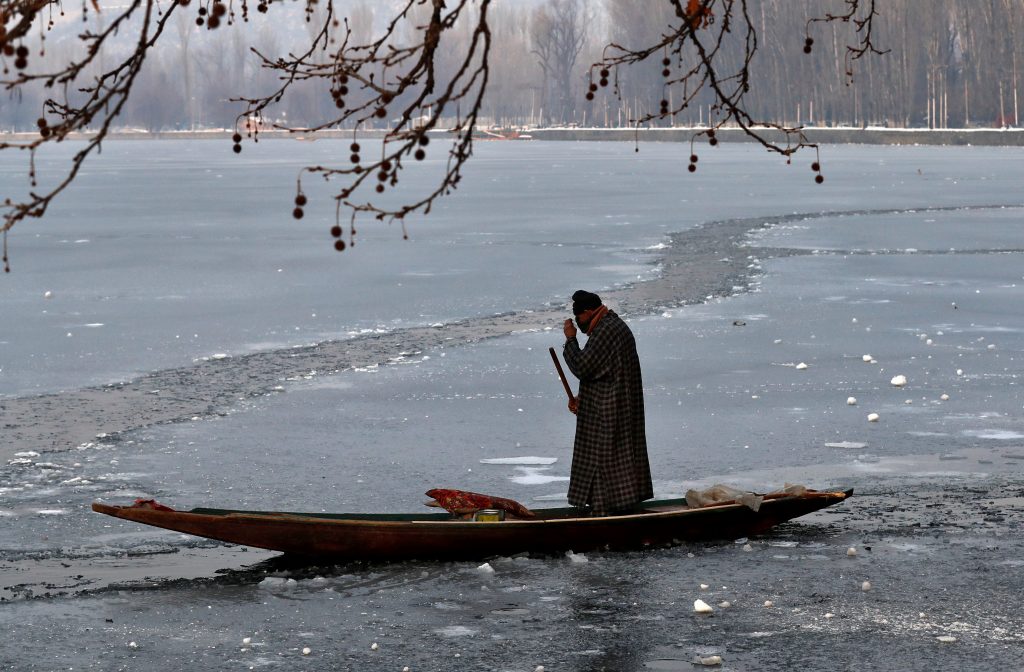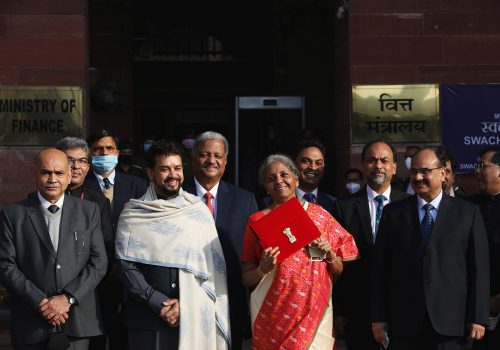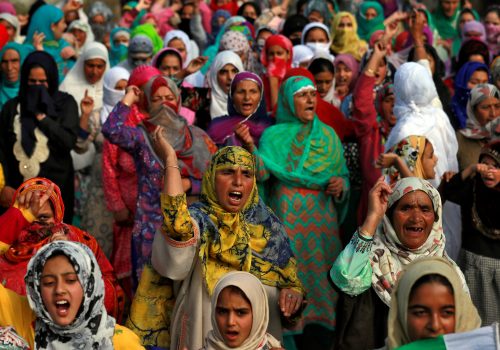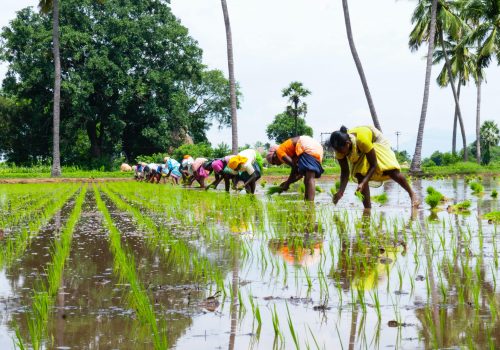For the first time in decades, India’s air became clean and breathable.
At the same time, however, the COVID-19 crisis has devastated India’s economy and public health. Unemployment has skyrocketed, state revenues have dried up, and many continue to die each day of the pandemic. In the midst of this catastrophe, however, there emerged one positive development: a drastic improvement in India’s air quality. As the Indian economy has re-opened in recent months, that improvement has now been erased. Yet, this brief period of clean air offered a glimpse of what can be gained by building a cleaner, more sustainable Indian economy. To explore how that can materialize, this piece will first examine the opposing ecological and economic impacts of India’s lockdown, and then pose policy recommendations that balance sustainability and economic growth.
The extent of India’s air quality improvement was both visible to the naked eye and scientifically measured. Last summer, pictures circulated across social media of citizens in the Punjabi city of Jalandhar seeing the Himalayan mountain range a hundred miles away, something that had not been possible for thirty years. In addition, numerous scientific studies were conducted to examine this phenomenon. An August report by Science Direct measured the density of air pollutants in India’s atmosphere over several months, confirming this drastic improvement during the lockdown. Specifically, the study found that concentrations of PM10 and PM2.5—both key pollutant metrics—reduced by half in cities across India. This data also offered evidence that “pollution source control can attenuate the air quality,” establishing a causal relationship between a city’s industrial emissions and the air that its people breathe.
Of course, the lockdown’s contribution to improving air quality must be factored against its economic consequences. The industrialization of India—which is inextricably tied to its air pollution—has integrated the country into global markets and catalyzed the economic growth that has lifted hundreds of millions out of poverty. Manufacturing jobs in India’s industrial centers have provided consistent employment at higher incomes for Indians across the country, including migrants from the nation’s poorest states, such as Bihar and Uttar Pradesh. Given this reliance on industry and manufacturing, the near-complete shutdown of the Indian economy last year had crippling effects on the lives of the country’s most vulnerable citizens. The drastic lockdown measures imposed countrywide endangered the livelihoods of 40 million internal migrants whose incomes were cut off overnight. Millions of families slipped back into extreme poverty, often resorting to dangerous child labor to put food on the table.
These hardships make it painfully evident that a safe re-opening of the economy is vital for the wellbeing of India’s citizens. That does not mean, however, that Indians should be resigned to reverting back to the pre-pandemic status-quo. Industrialization, while yielding great economic benefits, has also exacted an ecological cost. Smog and dirty air are endemic to Indian cities; Delhi in particular has seen infamously poor air quality in recent years, culminating in what the city’s Chief Minister called “unbearable levels” in 2019. This past winter, the air situation in Delhi was again dire. This environmental crisis is especially concerning given the link between air pollution and COVID-19 severity. While the economic shutdown last year was untenable, the return to the status-quo we are now seeing is not much of a solution either. The question is: how can India’s governments and businesses work to improve the country’s air quality with a fully opened economy?
Policy recommendations
Central, state, and local governments must craft detailed and comprehensive plans to rebuild the economy in an emissions-conscious way, emphasizing clean energy. Policymakers, in partnership with businesses, can leverage a variety of tools to ensure that the economy is built back cleaner. Some of these policies are already being implemented in parts of the country, while others have yet to be tried. In addressing the air pollution problem, no stone should be left unturned:
- States and municipalities must continue and expand the existing ordinances promoting electric vehicles and discouraging dirtier sources of fuel such as petrol and diesel. These ordinances, along with Indian car manufacturers’ increased focus on electric vehicles and their growing domestic demand, are all encouraging signs. Cities must go even further, however; experts have recommended waiving road taxes for e-auto rickshaws, implementing electric-based public transportation systems, and incentivizing corporate taxi fleets to switch to electric cars. As numerous studies have shown, adoption of electric vehicles has a direct positive effect on carbon emissions and air quality. To create a cleaner future economy, India should continue and accelerate this adoption.
- India must also ensure that the electricity itself is being generated sustainably. In addition to discouraging dirty fuel, clean energy production must be reinforced. The central government has ambitious clean energy goals in mind, aiming for 450 GW of renewable energy capacity by 2030. On the state level, several governments have already announced policies to encourage renewable production and discourage the expansion of new coal plants, most notably in Rajasthan and Gujarat. Though these initiatives are a good first step, concrete action is needed to build a cleaner Indian economy.
- The central government must provide liquidity and fiscal support for companies that produce wind and solar energy to ensure they can survive the crisis and build on their pre-COVID momentum. In a study conducted by the Rocky Mountain Institute, researchers emphasized the importance of promoting local manufacturing of clean energy materials. One major obstacle in pursuit of this goal is the high cost of storage and transportation of wind and solar energy, India’s two biggest drivers of renewable power. This challenge has been further complicated by the COVID crisis, as reduced energy demand has financially strained the companies producing these energy sources. Though the Indian government has implemented some subsidies in the form of cost incentives for consumers, direct fiscal stimulus to aid solar and wind producing firms is necessary. In addition to government aid, Indian banks must also be incentivized to provide easier liquidity to these firms to promote the industry’s growth.
- Free international trade and foreign investment is crucial to reducing the costs associated with clean energy production. A 2020 study by the Institute for Energy Economics and Financial Analysis reported that Indian tariffs on renewable energy have risen to two thirds of its tariffs on coal-sourced energy. Streamlining and lowering these tariffs would help stimulate trade in the materials involved in renewable energy, thereby lowering costs. 2019’s Flexible Resources Initiative signed with the United States was an important first step in promoting global investment in Indian renewable resources. Amid the new, more trade-friendly Biden administration in Washington, fostering trade in clean energy materials between India and the United States will be a key area of opportunity. Foreign investment in Indian companies producing renewable energy is vital and can complement domestic support.
India sits at an inflection point. The one silver lining of improved air quality resulting from the COVID-19 lockdowns has faded as the country re-opens and looks to rebuild its crippled economy. India’s recovery will be long and difficult, but it also poses an opportunity. If governments, businesses, and international actors work together to accelerate the adoption of electric vehicles and renewable energy, India can emerge as a global leader on carbon emissions reduction and avoid a return to the unsustainable and ecologically destructive status quo of old. Should they succeed in doing so, perhaps the citizens of Jalandhar will once again be able to look up and see the snow-capped mountains of the Himalayas.
Shashank Jejurikar was a fall intern at the Atlantic Council’s South Asia Center and is currently a Master of International Affairs Candidate at Columbia University’s School of International and Public Affairs.

The South Asia Center is the hub for the Atlantic Council’s analysis of the political, social, geographical, and cultural diversity of the region. At the intersection of South Asia and its geopolitics, SAC cultivates dialogue to shape policy and forge ties between the region and the global community.
Related content
Image: A man rows his boat on the partially frozen Dal Lake in Srinagar January 14, 2021. REUTERS/Danish Ismail



